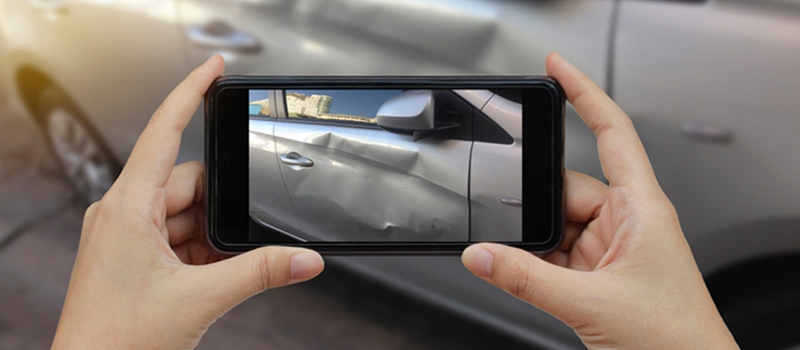Tips for Taking Clear and Accurate Photos Following An Accident
Tips for Taking Clear and Accurate Photos Following An Accident

Tips for Taking Clear and Accurate Photos Following An Accident
Take photos of the accident as soon as possible.
There’s a lot to handle at the scene of an accident, but it’s extremely important to capture photos of the scene as accurately as possible. Even before the police arrive, you’ll want to document details like the condition of the road, the position of the cars and other details. Be sure to only take photos of the scene if it is safe to do so! If you are injured, seeking medical assistance takes priority.
If you are unable to take photos because you are injured, shaken up from the crash or otherwise unable to walk around, ask a passenger, loved one or trustworthy witness to take pictures for you.
Photograph all of the details.
Because crash photos serve as evidence, you need to photograph every detail before the tow truck pulls away with your car. This includes pictures of broken windows, deployed airbags, scratches, dents, damaged tires and fluid leaks. If there is visible engine damage, be sure to document that as well. Even if you think these details might not be important now, they may be extremely important for legal or insurance-related reasons at a later point in time.
Capture the scene from various angles.
To be extra thorough, be sure to take photos of the accident scene from different perspectives. Take plenty of close-up photos of dents and scratches in order to document the damage to your car, and double check to make sure that the photos are not blurry. After you have your close-up photos, take a few steps back and take some photos from further away, capturing photos of the accident from all sides.
Document the surrounding area in your photos.
Important details, like skid marks, broken glass, traffic signs, road debris and weather conditions, can be crucial to document at the scene of the accident. This information, when properly documented, can help provide vital information in the investigation. For example, skid marks can help show whether a driver was speeding, braking or sliding. Additionally, photos of traffic lights or signs can help determine who was at fault, depending on the circumstances. If the accident occurred during inclement weather, documenting the conditions where the accident occurred can help determine if a driver had impaired visibility. All of these details can provide supporting evidence in your insurance claim, so be sure to document them properly.
Take multiple versions of photos with and without a flash.
Depending on the lighting and time of day, some photos may show more detail when you use a flash. If possible, take multiple versions of photos using a flash and natural light. If any of your photos are blurry, unclear or distorted, having additional versions of the same photo may help clear up any questions related to damage your vehicle sustained.
Don’t jot down everyone’s info – take photos instead.
Most people tend to write down the information of all parties involved in an accident, including driver’s license info, registration and insurance details. But during all of the activity following an accident, it’s easy to misspell or incorrectly record these details. Instead, take photos of these documents. It will save you some time, and you’ll help avoid possible errors in your records, which could delay the insurance claim process!
If you’re injured, take plenty of photos of your injuries.
Soon after your crash, take plenty of photos of any wounds or bruises you sustained. Keep in mind that this evidence may heal or fade after a few days, so it’s best to document it as soon as possible. If you can’t take photos of your own injuries, ask someone to help you. These types of photos serve as important photographic evidence in insurance or legal claims. If you sustain injuries that aren’t visible, be sure to hold onto copies of your medical tests and documents, especially if x-rays or MRIs are required.
Always take more photos than you think you might need.
Even if you think you might be going a little bit overboard, it’s better to be thorough with the number of photos you’re taking. You can always delete unnecessary photos later to free up space on your phone or camera, but you never know what small detail might be especially important.
Accidents happen to even the most careful drivers, and National General is here to help every step of the way. If you’re feeling unsure about whether your coverage is adequate in the event of an accident, reach out to your local independent agent. They’ll be happy to answer any questions, and will help you get the coverage you need to help you feel safe on the road!
